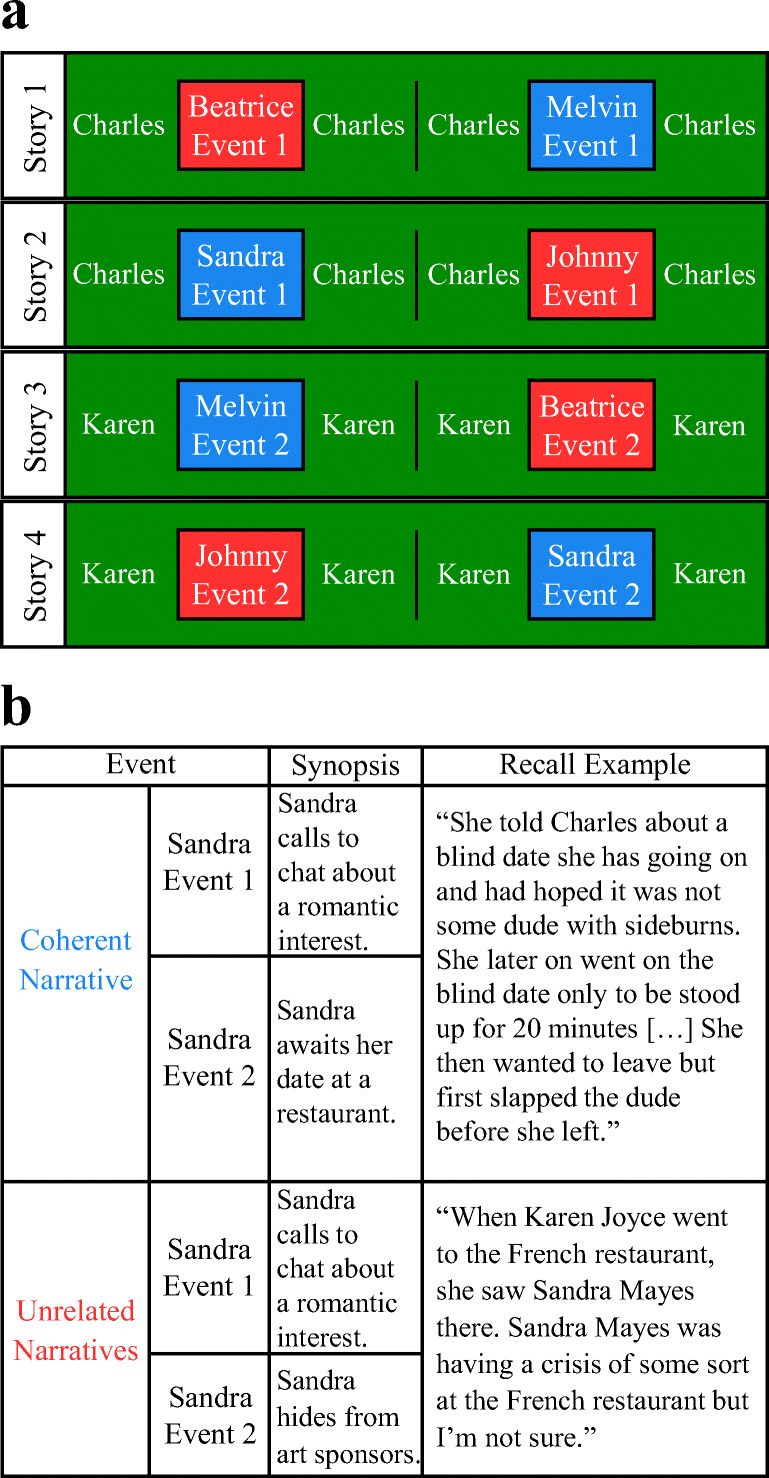Fig. 1.

Sideplot coherence paradigm. a Stimulus design and presentation: Four fictional stories were presented serially as audio clips (240s each), in the context of long stories about one of two main protagonists (Charles or Karen; “main plot events” in Green). Events involving key side-characters (Beatrice, Melvin, Sandra, Johnny; 40s each) did not relate to the main plot events (they were “sideplots”). However, for two side-characters (Blue boxes), two temporally-distant events could form one Coherent Narrative (e.g. Sandra Events 1 and 2). In contrast, for two other side-characters (Red boxes), Events 1 and 2 belonged to Unrelated Narratives (e.g. Johnny). b Examples of narrative events: Synopses and recall examples (of varying success) are provided for two possible pairs of events for Sandra, one which is Coherent, and one which is Unrelated. For each participant, side-characters were randomly assigned to either the Coherent Narrative or Unrelated Narratives conditions
